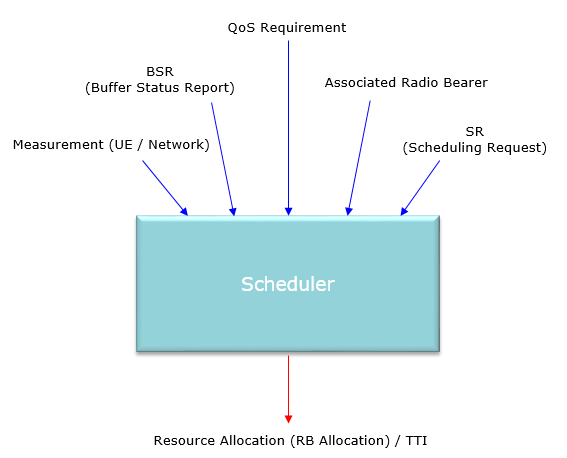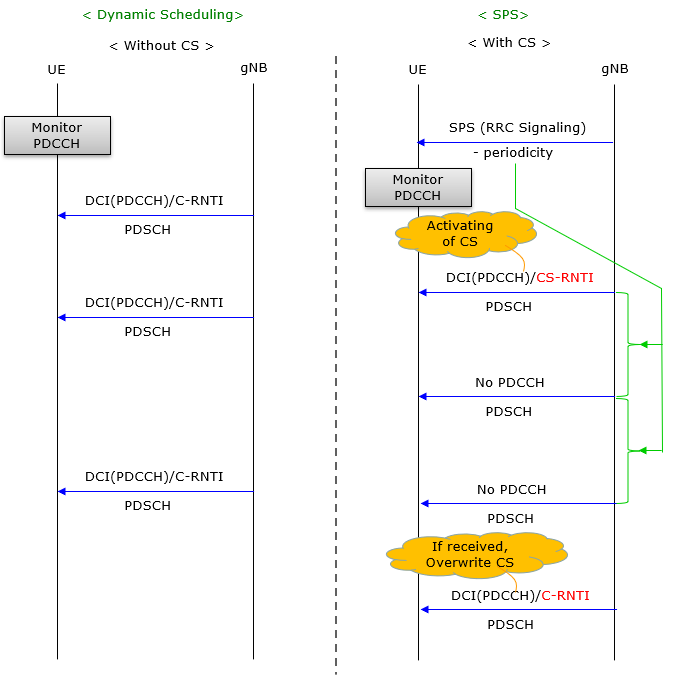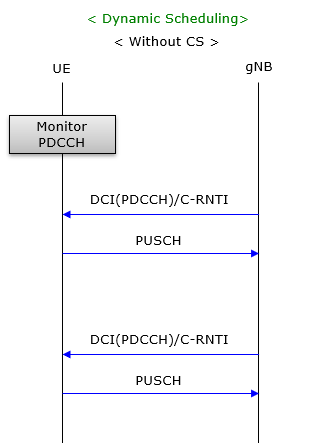|
|
||||||||||||||||||||||||||||||||
|
Scheduling is the process of allocating resources for transmitting data. As in LTE (actually in all cellular communication), NR scheduling is dictated by Network and UE is just following what network tells. Overall scheduling mechanism in NR is pretty much similar to LTE scheduling, but NR has finer granularity than LTE especially in terms of time domain scheduling at physicallayer. In this page, I will just go through very high level view of NR scheduling process. For the detailed procedure/operation, I will create separate pages and point to those pages.
High Level Factors for SchedulingAt high level view, NR Scheduling is not much different from LTE scheduling in terms of overall concept. In this page, I will describe on the overview of NR Scheduling and the further details will be linked to several separate pages. The overall skelleton of this page is based on Based on "38.300 - 10 Scheduling" even though most part is written in my own words and illustrations.
Scheduling Structure at PHY LayerIn terms of Physical layer, there are roughly two categories of scheduling that are time domain scheduling and frequency domain scheduling. Frequency Domain Scheduling in NR is almost same as LTE. Time Domain Scheduling in NR is similar to LTE TDD schduling, but there are several time domain scheduling factors that are not supported in LTE. Actually Scheduling is a huge part in NR protocol and there are so many factors and terminologies that you need to understand. Since it is difficult to put all those details in one page, I have written several different pages with the details for each individual aspect/factors listed below. Just try to get the big picture about the scheduling in this page and follow through the link mentioned in comments column in the following table.
Type of Downlink SchedulingThere are two types of scheduling for downlink. One is called 'Dynamic Scheduling' and the other one SPS(Semi Persistent Scheduling'). Dynamic scheduling is the mechanism in which each and every PDSCH is scheduled by DCI(DCI 1_0 or DCI 1_1). SPS is the mechanism in which the PDSCH transmission is scheduled by RRC message. SPS is explained in detail here.
As in downlink scheduling, there are two types of scheduling for uplink. One is called 'Dynamic Scheduling' and the other one CS(Configured Scheduling'). Dynamic scheduling is the mechanism in which each and every PUSCH is scheduled by DCI(DCI 0_0 or DCI 0_1). CS is the mechanism in which the PUSCH transmission is scheduled by RRC message. The further details about CS is explained here. Trigger for PUSCH scheduling can be summarized as in the following table (I wrote this table based on the description on 38.214-6.1).
|
||||||||||||||||||||||||||||||||



